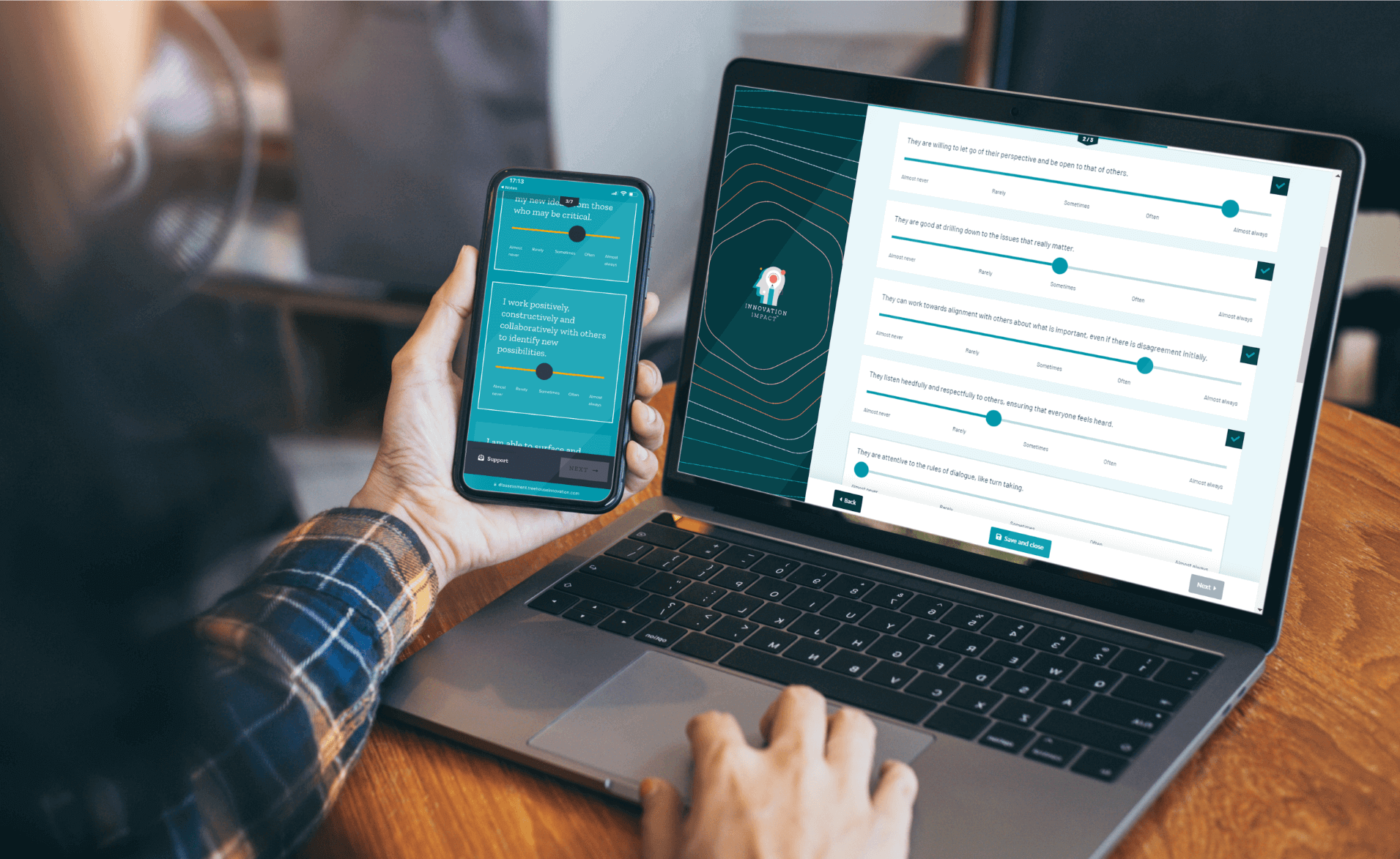Enhancing The Classroom Experience

A US-based college used the Innovation Impact Assessment as a part of its design thinking course. Students took the assessment twice during the program: at the start, to understand their current strengths and development opportunities upon entering the class, and at the end, to gauge the progress they had made and confidence putting what they had learned into practice.
As a result of their heightened self-awareness, students were more receptive to learning, having a clearer idea of the areas they should lean into and how they can most effectively improve. The results of the assessment were also helpful for the course teacher: they could modify the course syllabus and their own teaching style based on their students’ strengths and weaknesses.
Best of all, students could continue to apply what they have learned from the assessment long after finishing the course, continuing to grow as innovators.
Similar stories
Designing better careers for top talent at Sky
Sky’s leadership team wanted to reimagine the Employee Experience, particularly for their more junior employees.
Read moreTraining top talent at Fujitsu in human centred design
Fujitsu have long been advocates for using human centred design as a method for identifying opportunities to develop technology that can help solve problems for customers and society, right across the globe. Their core Innovation […]
Read moreAccenture: Amplifying innovation impact
We were delighted to work with global consulting firm Accenture to help one of its innovation teams – The Accenture Canada Innovation Hub – amplify its impact. The Innovation Impact: Skills Assessment is an easy […]
Read moreLet's talk
If you can spare the time for a 30 min ZOOM call, a member of our senior team would be happy to discuss your aspirations and challenges, and explain how we can help.